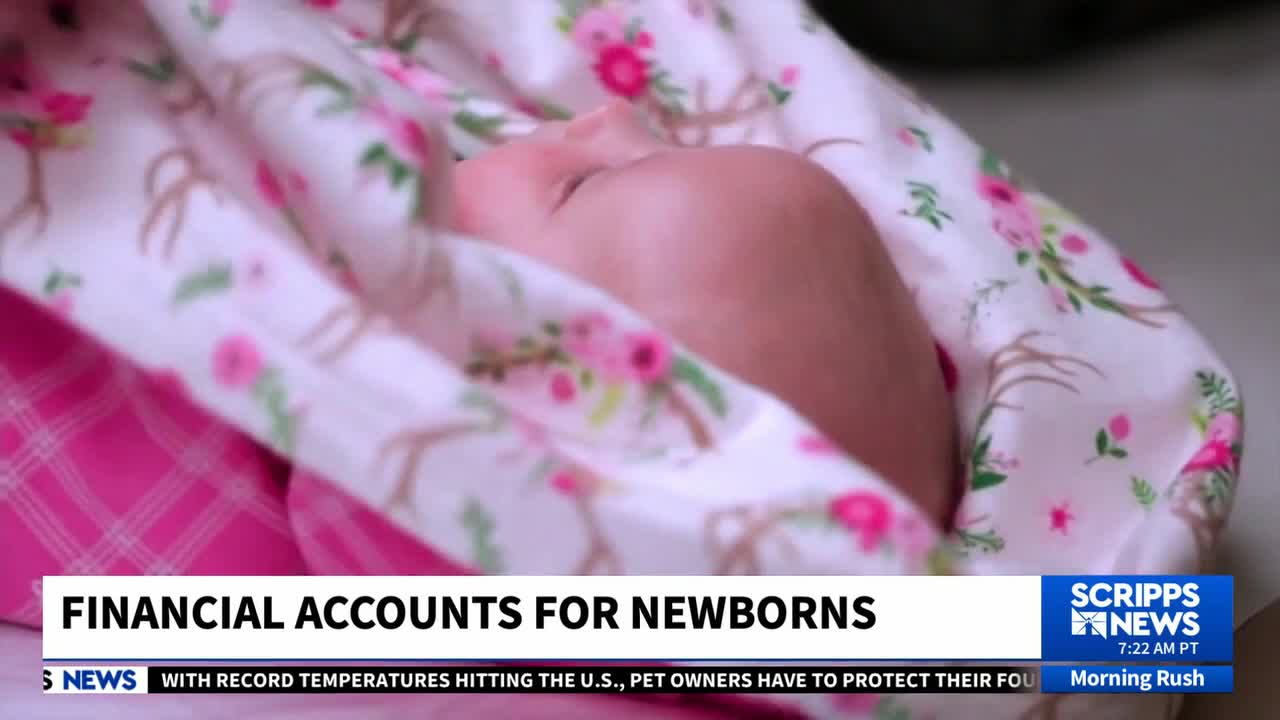Newborns in the U.S. may soon begin life with a financial boost, thanks to a new federal program included in President Donald Trump’s sweeping new legislation, dubbed the “big beautiful bill.”
Under the measure, every child born between Jan. 1, 2025, and Dec. 31, 2028, will receive $1,000 in a so-called "Trump Account."
“This is a pro-family initiative that will help millions of Americans harness the strength of our economy to lift up the next generation,” said President Donald Trump.
The money will be deposited into a tax-deferred index fund account. Parents will be allowed to contribute up to $5,000 annually to the account, with up to $2,500 of that potentially matched by their employer.
RELATED STORY | What you need to know about the impact of the 'big, beautiful bill' on student loans
First-time mom Tara Nelson said that while the program sounds like good news, she isn’t relying on the government to secure her baby’s financial future.
“It’s very much a focus on like, stashing money away just in case, because suddenly you are looking out for another life. You want to make sure you have what you need to take care of them,” she said.
To qualify, the child must be a U.S. citizen, and both the child and at least one parent must have a valid Social Security number.
But where is the money coming from?
“We are footing the bill for that, so if you think about how many children were reported in 2024, it’s over like 3 million. So, 3,000,000 × 1,000 is a lot of money that’s now going to be coming out of our taxpayers’ dollars,” said Flor Matteen, a financial advisor at Landsberg Bennett.
RELATED STORY | What's in Trump's 'big, beautiful bill'
There are limits on how and when the funds can be used. At age 18, the child can access up to half of the account balance. At 25, they may use the full amount for major expenses such as buying a home, starting a business, or paying for college. By age 30, the funds can be used for any purpose.
However, the distributions are not tax-free. Any withdrawals will be subject to long-term capital gains tax.
“What are the tax rates going to be, 5, 10, 20 years from now? So part of that — you’ll have to have a CPA or financial advisor kind of help and guide you [on] when is the best time to take the funds out,” Matteen said.
According to the nonprofit, nonpartisan Milken Institute, a $1,000 investment in a broad U.S. equity index fund could grow significantly over time — to about $8,000 in 20 years, $69,000 in 40 years, and potentially $574,000 by age 60, if left untouched.
Those numbers could offer peace of mind to new parents, even if they remain somewhat skeptical.
“That’s a huge piece of mind, because things become more expensive and there are so many unknown factors, and I think we could do more as a country to invest in our people and these people coming into the world,” Nelson said.
If a parent does not open an account for their child, the government will automatically create one when a tax return is filed. However, many details still need to be finalized, including where the funds can be invested and whether the accounts will follow a pooled structure, similar to 529 college savings plans, potentially managed by one or two investment firms.





